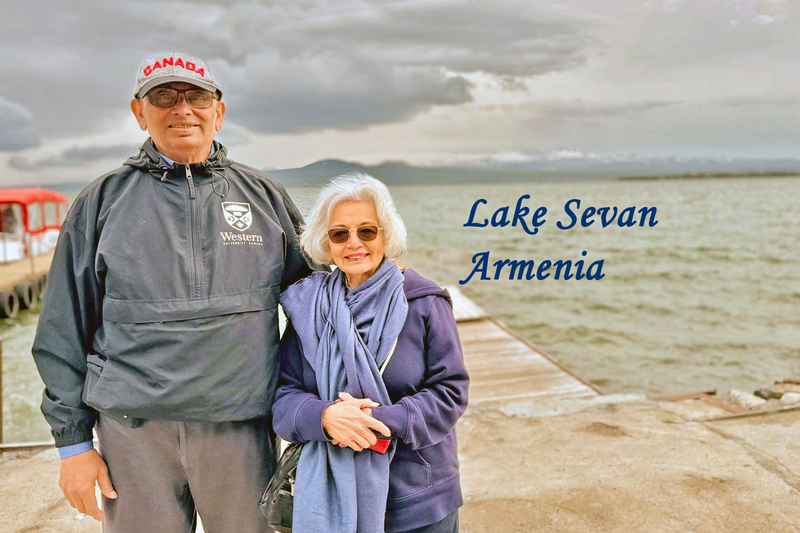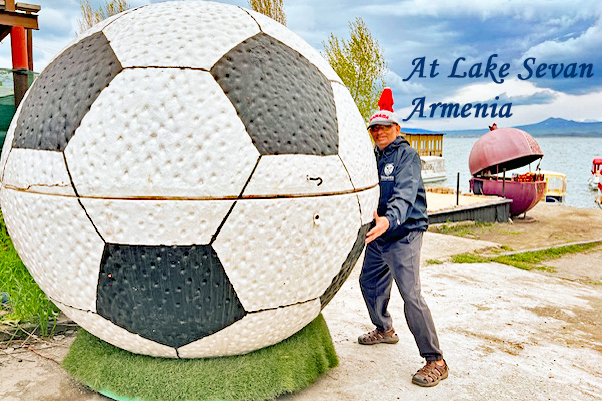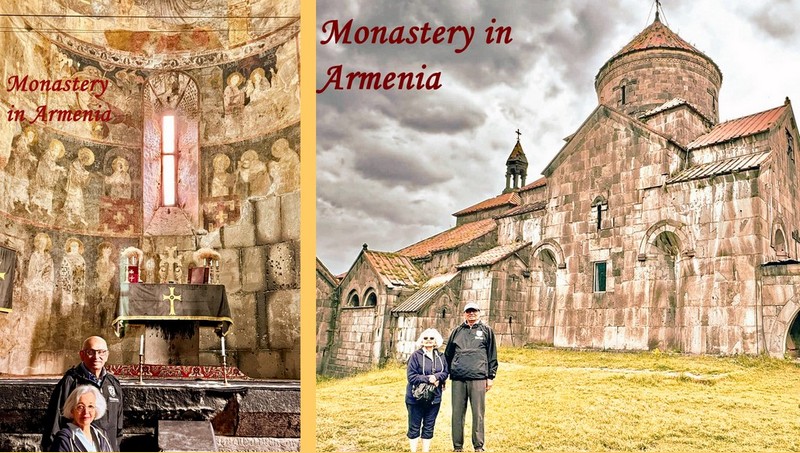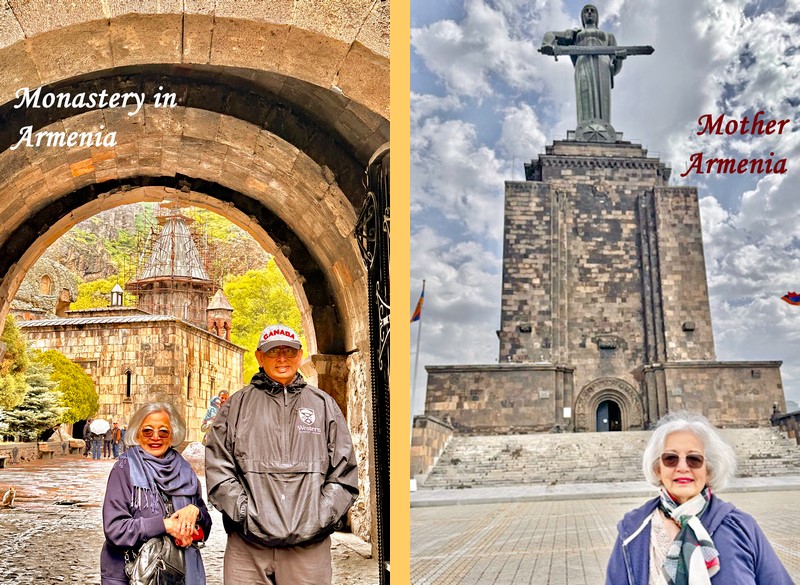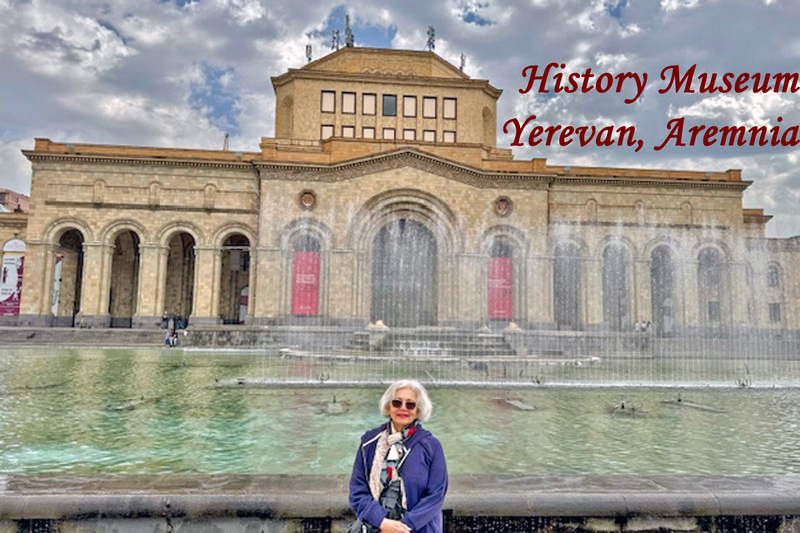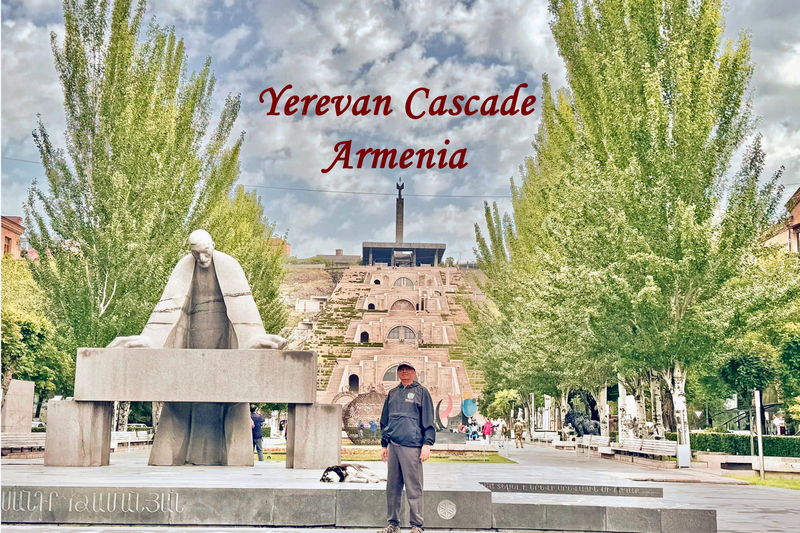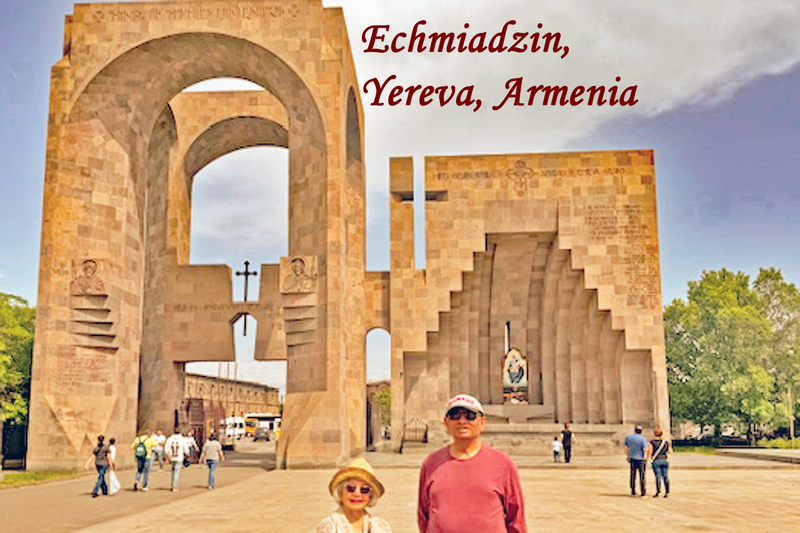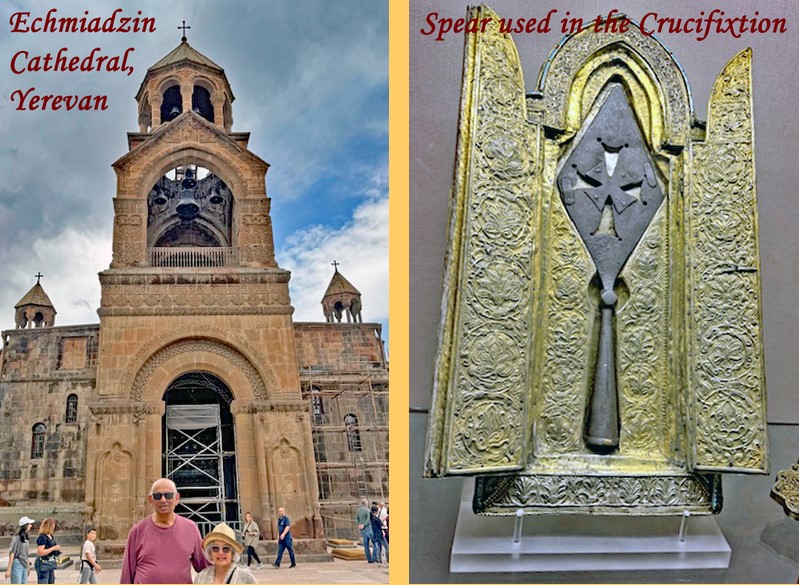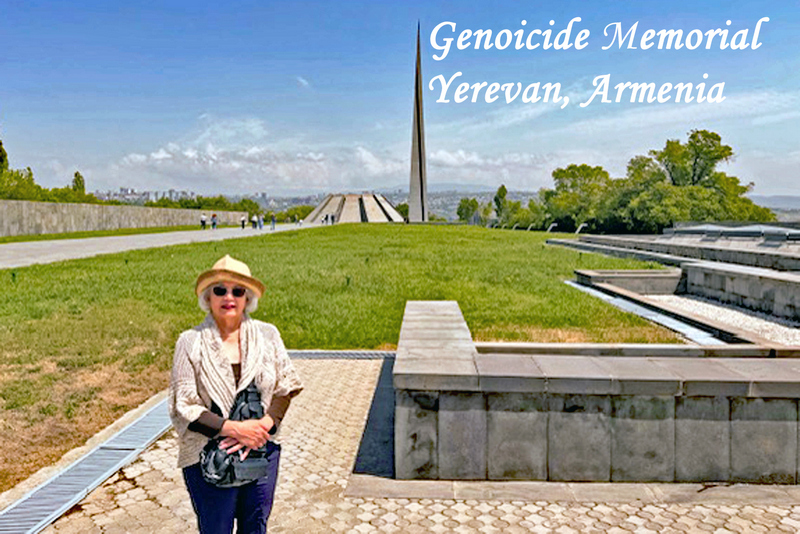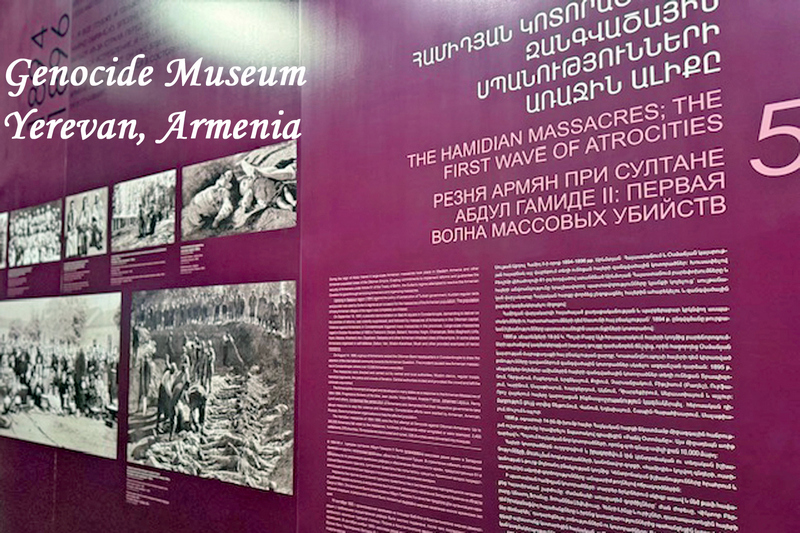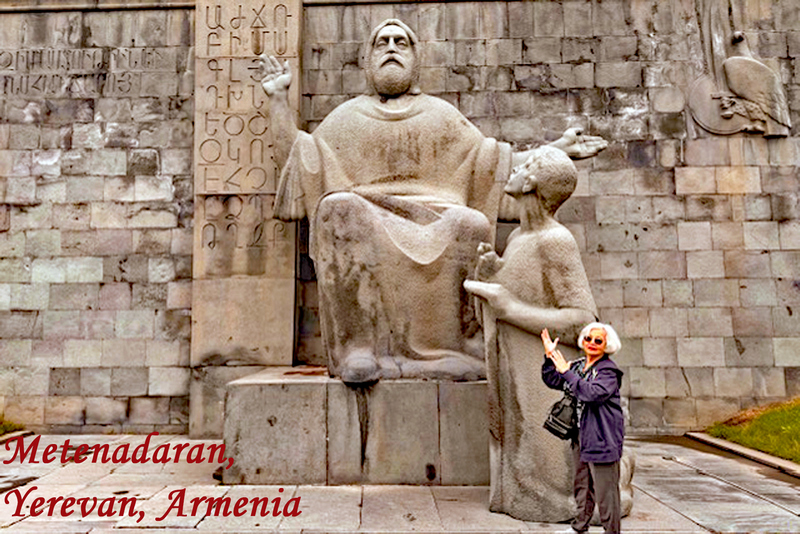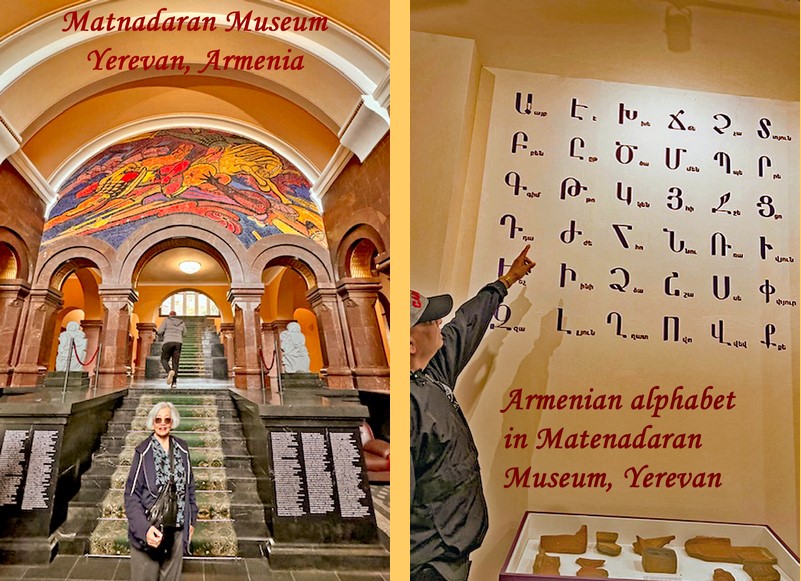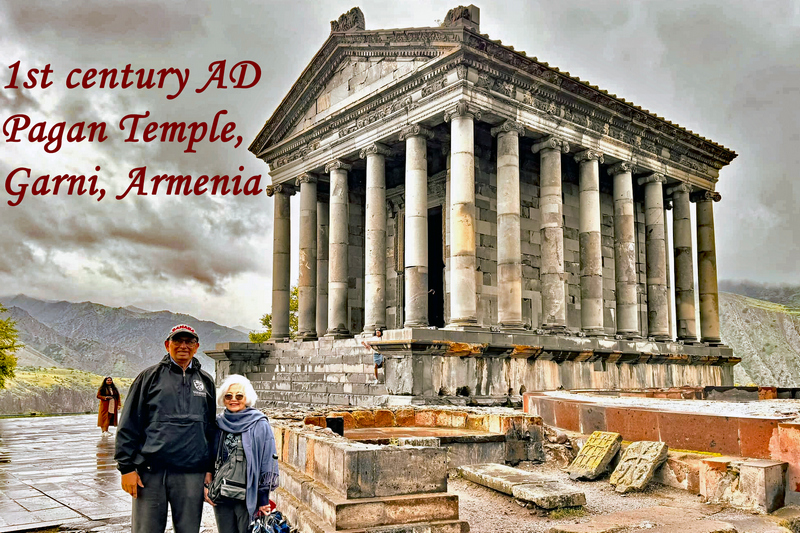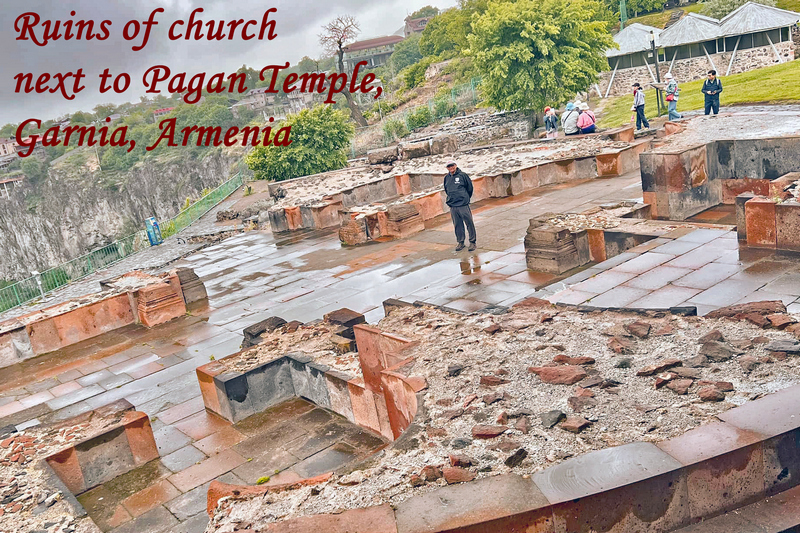

Travelogue
Amazing trip to little-travelled destinations
by Benild Pires
To reach my goal of visiting 80 countries before turning 80 this July, 2024 Laila and I decided early this year to visit five more countries in Central Asia and the Caucasus: Turkmenistan, Uzbekistan, Azerbaijan, Georgia, and Armenia. These countries are close to each other.
Laila and I were joined on our trip by the parents-in-law of my daughter,
Serena. They are Suraj and Kiran Ahuja and they live in North Vancouver. We met
at Istanbul and from there we flew together to Ashgabat, Turkmenistan, on April
24 arriving at 2 a.m. on April 25. They were with us throughout or trip until we
all left Yerevan, Armenia, on May 14. My eldest son, Karl, a partner in the
Tokyo office of A&O Shearman, joined us with his wife, Saho, and our
granddaughter Misha, in three of the five countries, Uzbekistan, Azerbaijan and
Georgia as my son and granddaughter had only a limited amount of time – my son’s
work did not allow him to be away for long and he was even dealing with clients
online while we were travelling, and my granddaughter had a Spanish-language
course in Mexico that she had signed up for.
Friends and relatives were shocked by
our choice to visit these former USSR countries, concerned about security and
political situations. However, we were determined. Additionally, my DNA analysis
by National Geographic’s Genographic Project indicated that I belong to
Haplogroup G. Members of this group originated 30,000 years ago in the eastern
Middle East and have a significant presence in Georgia, where 30% of the
population shares this haplogroup. This was another reason for our visit.
Our trip to these five countries was amazing.
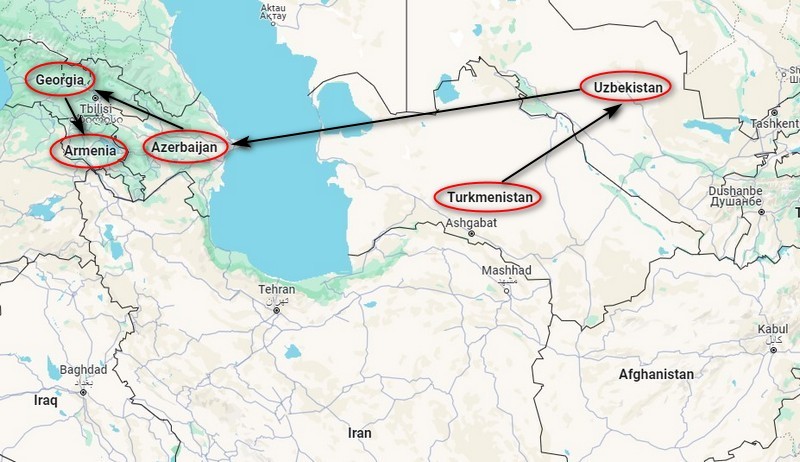
Turkmenistan
The architectural beauty, spaciousness, and modernity of Ashgabat’s
international airport were stunning. Ashgabat, the capital, is a unique "White
City" where everything is white, including ALL cars, buses, and buildings. It is
the cleanest city I've ever visited, with no overhead wires, graffiti, or tent
cities, and billions of trees planted everywhere. The roads and boulevards are
beautifully landscaped, and at night, the buildings are lit up in gorgeous
designs.
The people are beautiful and warm, with women mostly in
traditional garb. High school girls wear green, university students wear read.
One drawback was the lack of access to Facebook or social media, and even emails
were difficult to send and receive.
Ashgabat has been extensively
reconstructed since the 1948 earthquake, earning the moniker “White City” for
its white marble structures. The iconic Palace of Happiness, or Wedding Palace
is a prominent landmark. The Neutrality Arch symbolizes Turkmenistan’s policy of
neutrality.
We visited a horse farm where I rode a champion horse. The
Akhal-Teke breed, native to Turkmenistan, is sacred and celebrated during the
annual Turkmen Racing Horse Festival in April. We also attended a wedding in a
park and were warmly welcomed by the wedding party.
Nokhur, a village
with a distinct culture and picturesque surroundings, boasts sacred sites linked
to Persian folklore. The Darvaza gas crater, known as the "Door to Hell," is a
burning natural gas field that has been emitting flames since the 1980s.
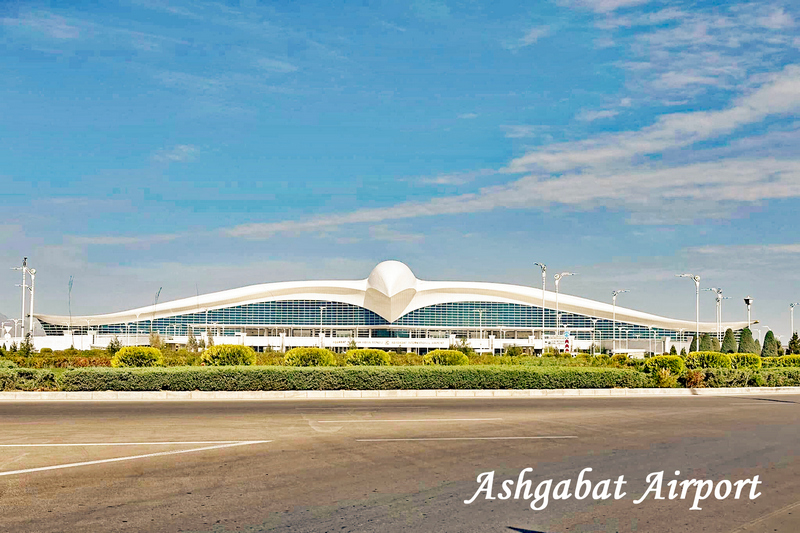

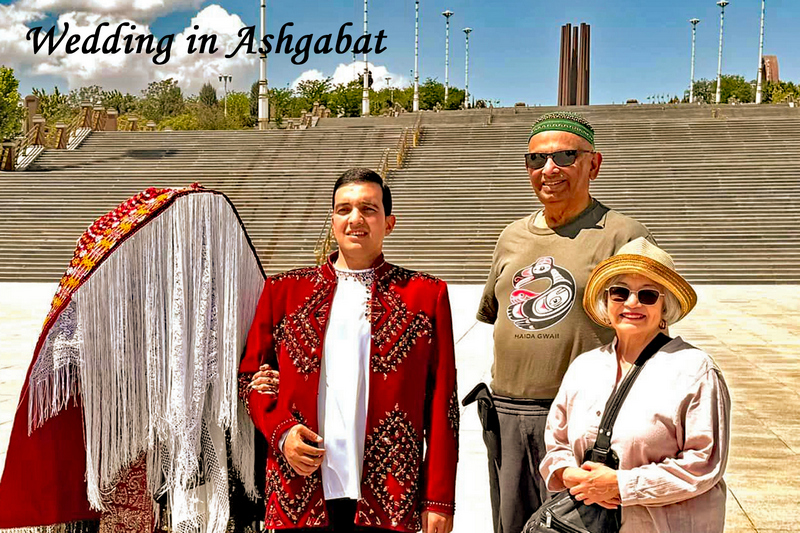
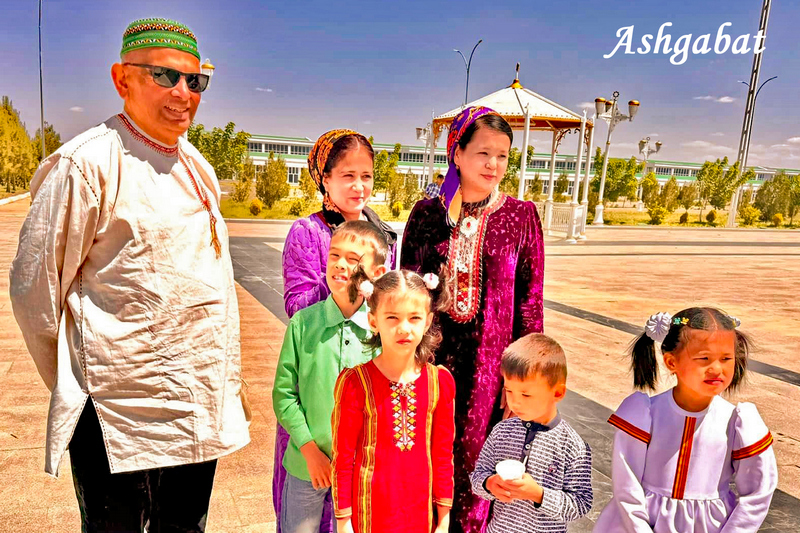
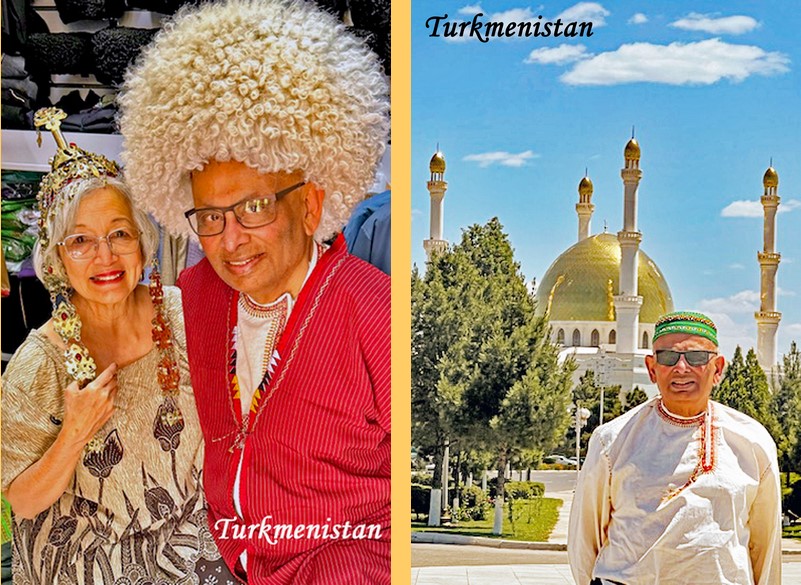
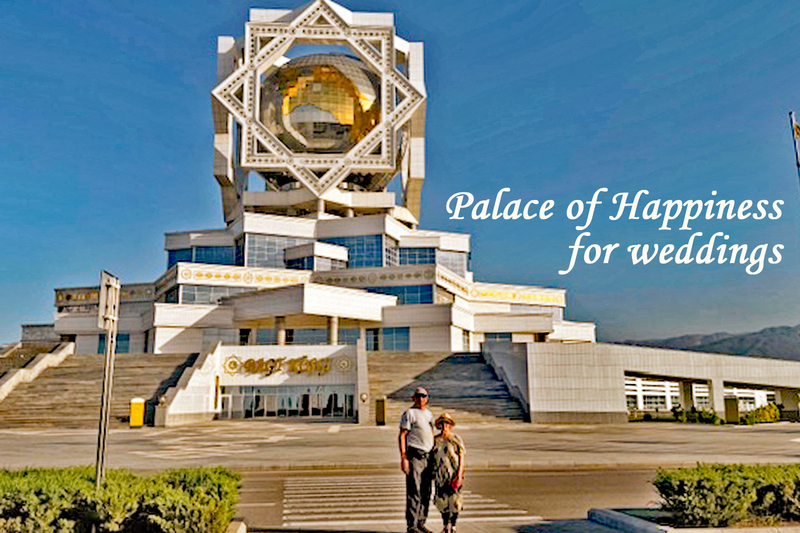
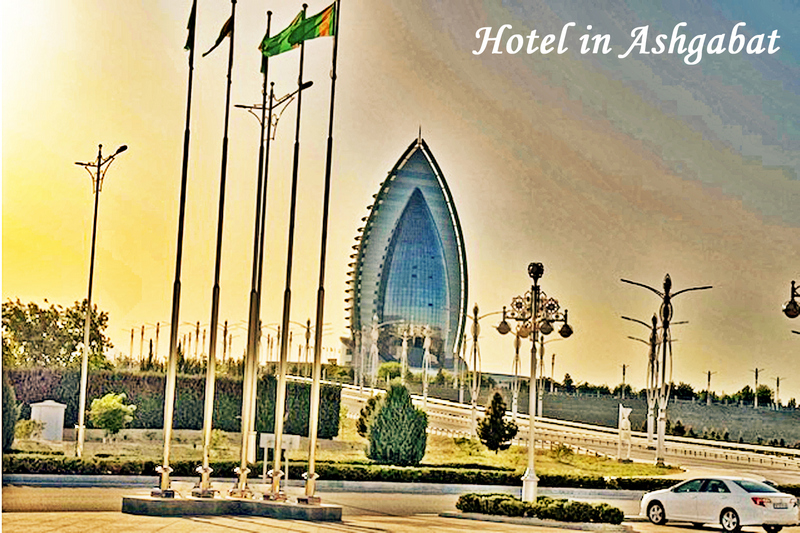
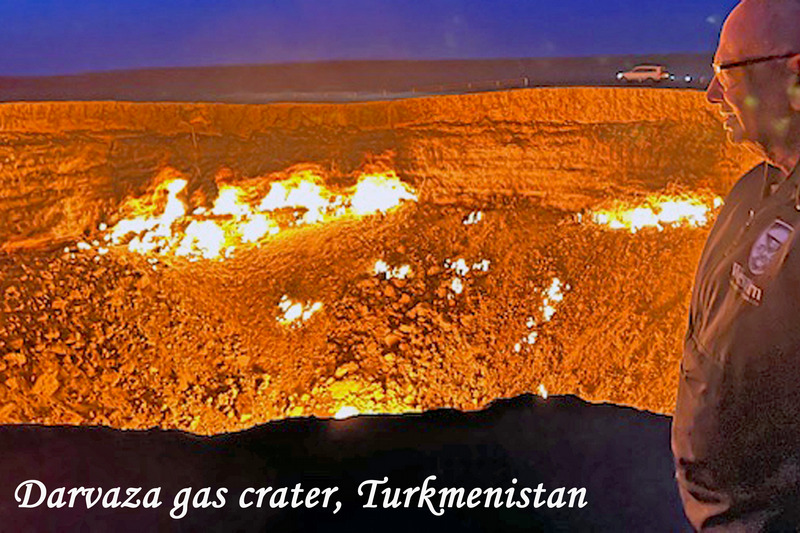
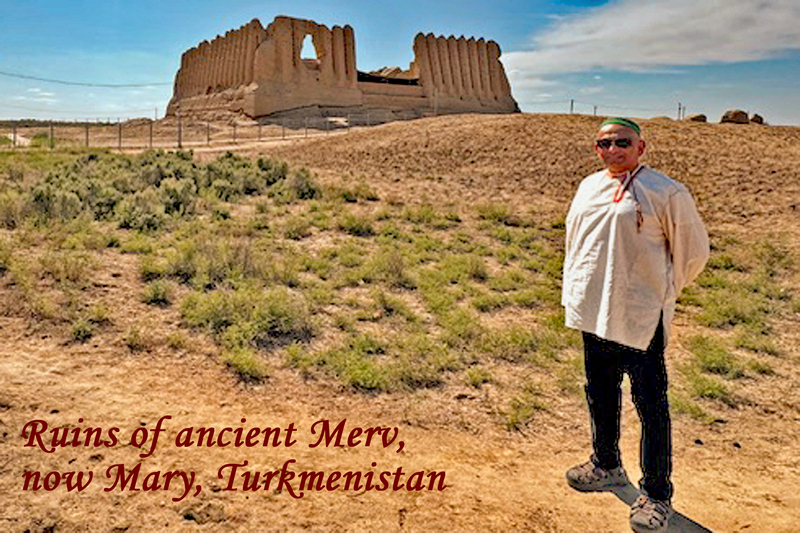
Uzbekistan
Bukhara, inhabited for at least five millennia, has been a center of trade,
scholarship, culture, and religion on the Silk Road. It boasts about 140
architectural monuments, with its historic center listed as a UNESCO World
Heritage Site.
The Ark of Bukhara, a massive fortress, now houses
museums. The historic Bolo Khauz Mosque, built in 1712, is known for its wooden
columns. The Ismael Sumani Mausoleum, dating back to the 10th century, is one of
Bukhara's oldest structures. The Chashmayi Ayub Mausoleum is dedicated to the
biblical figure Job and is known for its sacred spring. Other notable sites
include the Cor Minor Madrasah, the Maggoki Attori Mosque, and the major
Architectural Complex Poi Kalon.
Samarkand, another historic Silk Road
city, is renowned for its stunning architecture, including Registan Square. It
has preserved ancient crafts such as embroidery and silk weaving. In 2001,
UNESCO added Samarkand to its World Heritage List as “Samarqand – Crossroads of
Cultures.”
From Samarkand, we took a 3.5-hour train trip to Tashkent,
Uzbekistan’s capital. Tashkent has a rich history influenced by Sogdian, Turkic,
and Islamic cultures. Much of it was destroyed in the 1966 earthquake, but it
was rebuilt as a model Soviet city. Tashkent is known for its modern
architecture, museums, and vibrant cultural scene.
We visited the
Khazrati Imam Complex, the Koran Usman Museum, the Barakh-khan Madrasah, and
other historic sites. Independence Square is Tashkent’s central square, and we
had lunch at Besh Qozon, the largest pilaf production center in Asia, serving
3,000 people. Our night out was in Tashkent’s ‘Magic City,’ with dinner at a
Turkish restaurant.
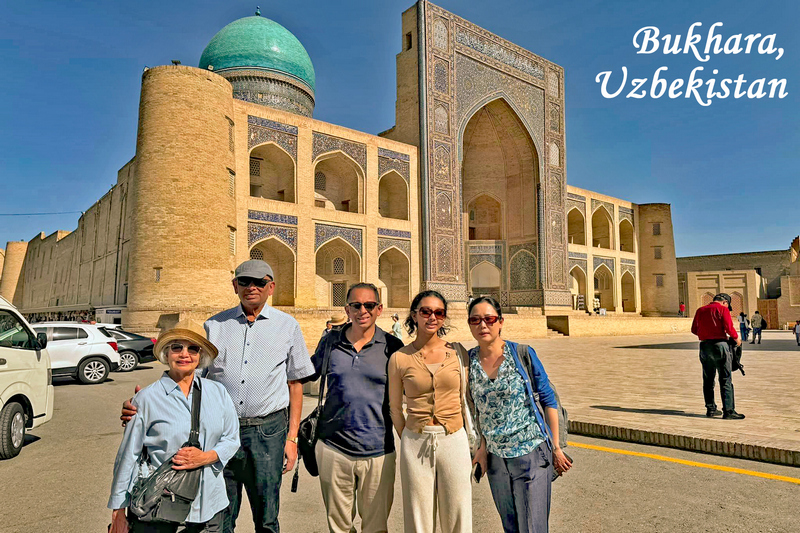
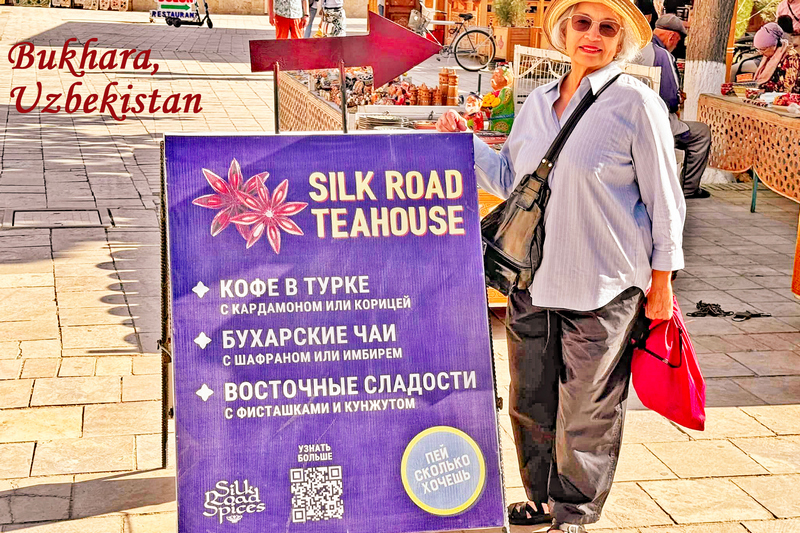
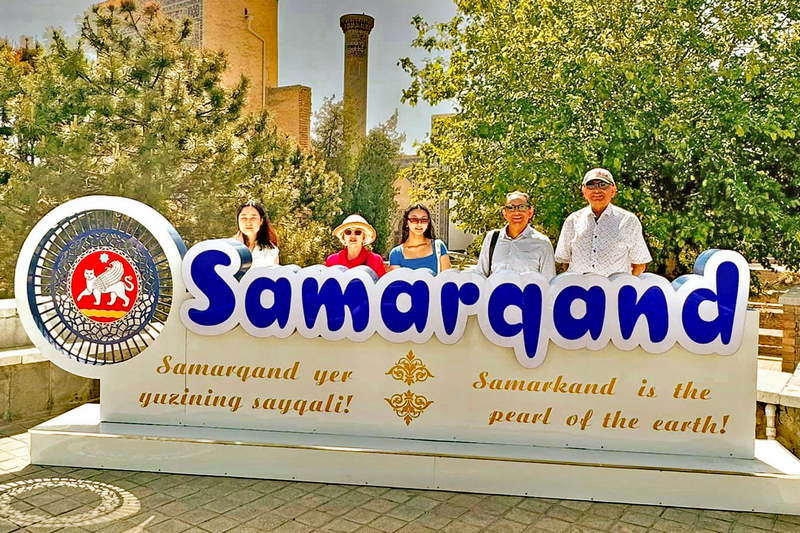
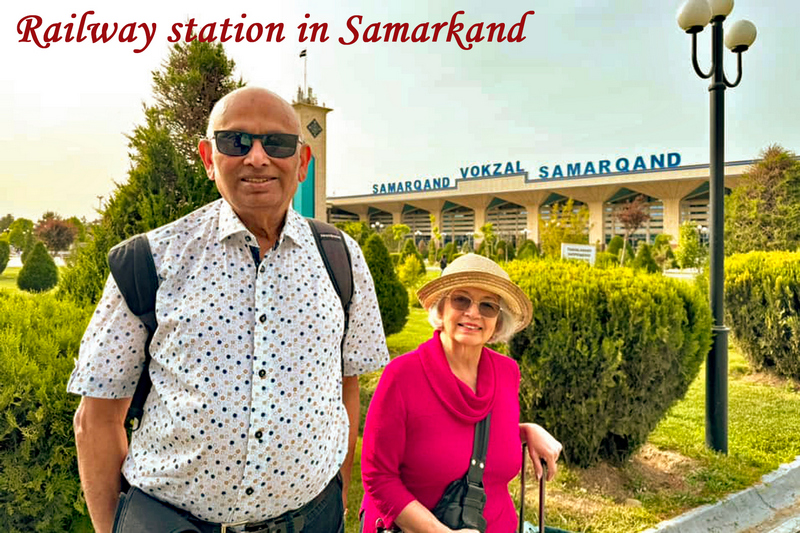
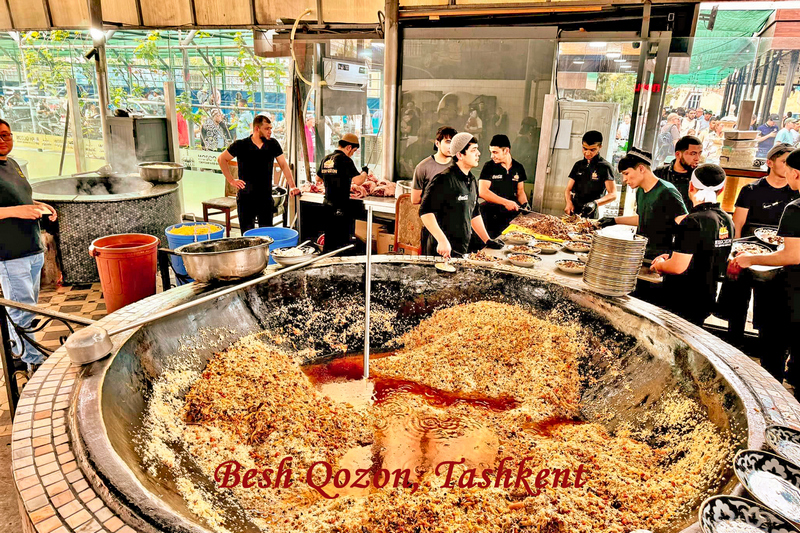
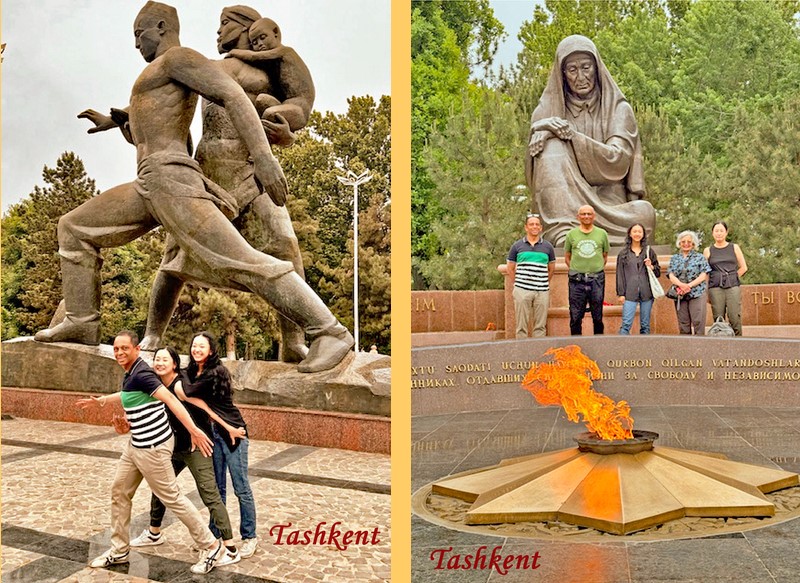
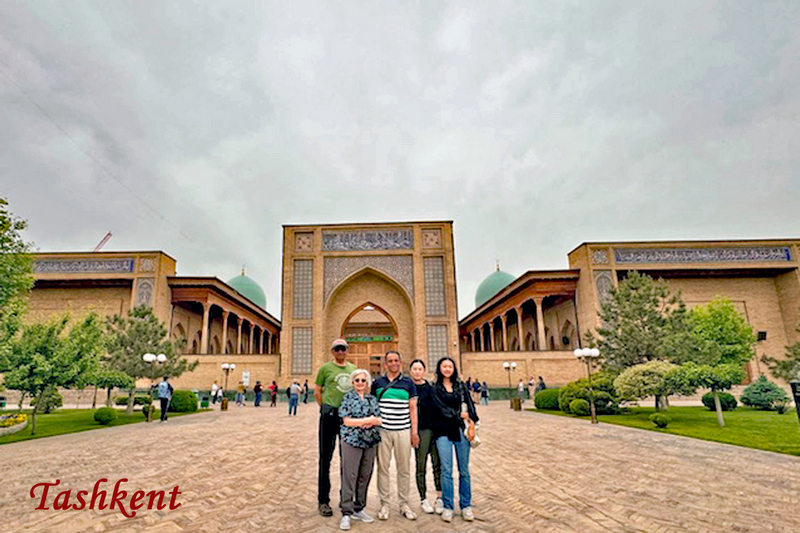
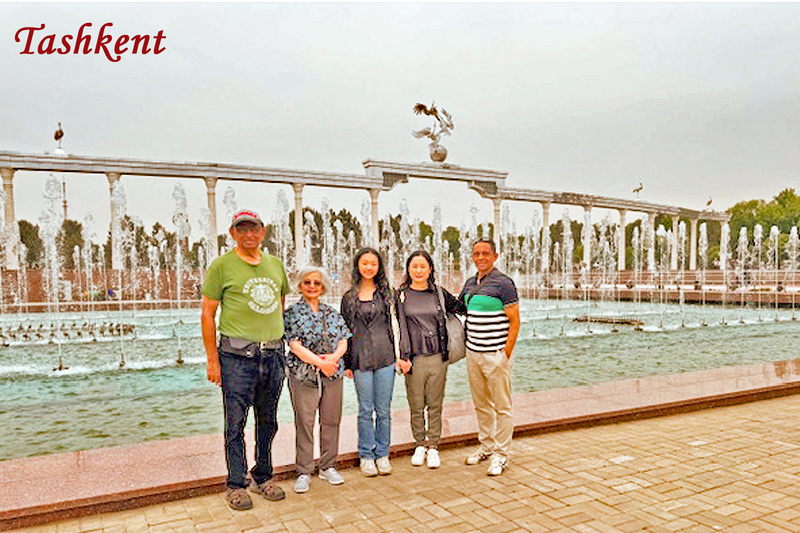
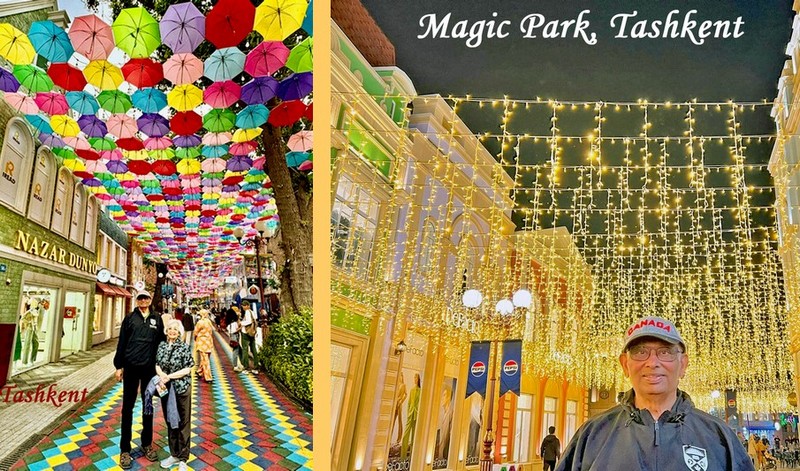
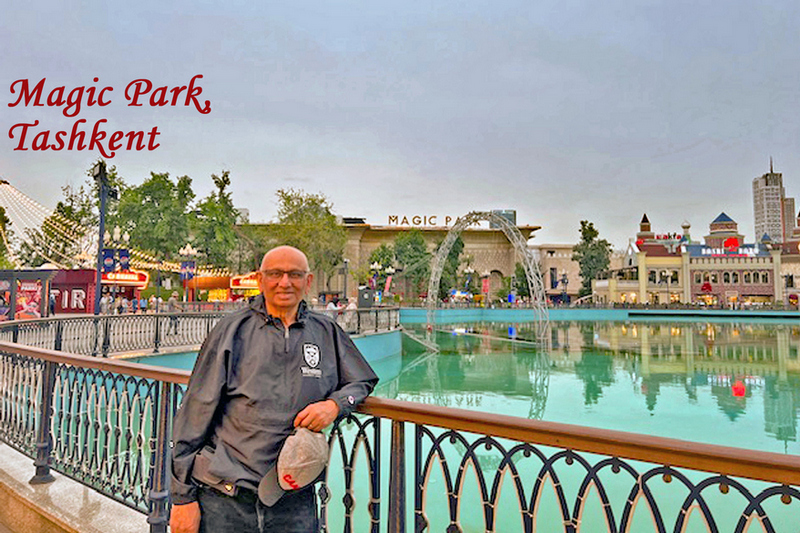
Azerbaijan
We arrived early in the morning from Tashkent, Uzbekistan, to another stunning,
spacious, and ultramodern airport, this time in Baku, Azerbaijan's capital. The
city captivated us with its beauty, cleanliness, and safety. Baku's wide
boulevards are lined with colorful flower beds and an abundance of trees, giving
the city a forest-like appearance. The parks are large and beautifully designed,
and both the heritage and contemporary architecture are magnificent.
Baku
is the largest city in Azerbaijan and on the Caspian Sea, situated 28 meters
below sea level, making it the lowest national capital in the world. The
historical Old City (Icherisheher) houses the Palace of the Shirvanshahs and the
Maiden Tower, both UNESCO Heritage Sites. Baku is Azerbaijan's scientific,
cultural, and industrial center, home to many major institutions and a hub for
international events, modern architecture, and the oil industry. The Baku
International Sea Trade Port handles two million tonnes of general and dry bulk
cargo annually. Known as the "City of Winds," Baku is also famous for its harsh
winds.
A must-see attraction in Baku is the Heydar Aliyev Centre,
designed by Iraqi-British architect Zaha Hadid. Since its opening in 2012, the
building's curved, wave-like shape and innovative use of space have made it an
icon of modern Azerbaijan. In 2014, it won the London Design Museum's Design of
the Year Award. The centre houses a world-class exhibition and museum complex,
featuring a museum dedicated to national leader Heydar Aliyev, a Mini Azerbaijan
exhibition, and a unique collection of classic cars.
The Gobustan State
Historical and Cultural Reserve, established in 1966, preserves prehistoric rock
carvings, mud volcanoes, and musical stones. Covering 537 hectares, it contains
over 6,000 rock carvings depicting various scenes, dating back 5,000 to 20,000
years. The reserve achieved national status in 2006 and was inscribed on the
UNESCO World Heritage List in 2007. The Petroglyph Museum, opened in 2011,
features these carvings and other artifacts.
On the road from Baku to
Sheki is Shamakhi, one of Azerbaijan's oldest cities, known for its traditional
dancers and possibly for inspiring the name of Soumak rugs. Despite being rocked
by eleven major earthquakes, Shamakhi remains significant, with the Juma Mosque,
built in the 8th century, surviving most quakes.
Qabala, consisting of
Gabala city and Kusnat village, was renamed after Azerbaijan's independence in
honor of the ancient city of Gabala. The resort town in the Caucasus Mountains
is known for its scenic beauty, outdoor activities, and historical landmarks.
Sheki, a historic city in northwestern Azerbaijan, is renowned for its
architecture, including the UNESCO-listed Palace of the Sheki Khans and Sheki
Fortress. It is an important trading center along the Silk Road.
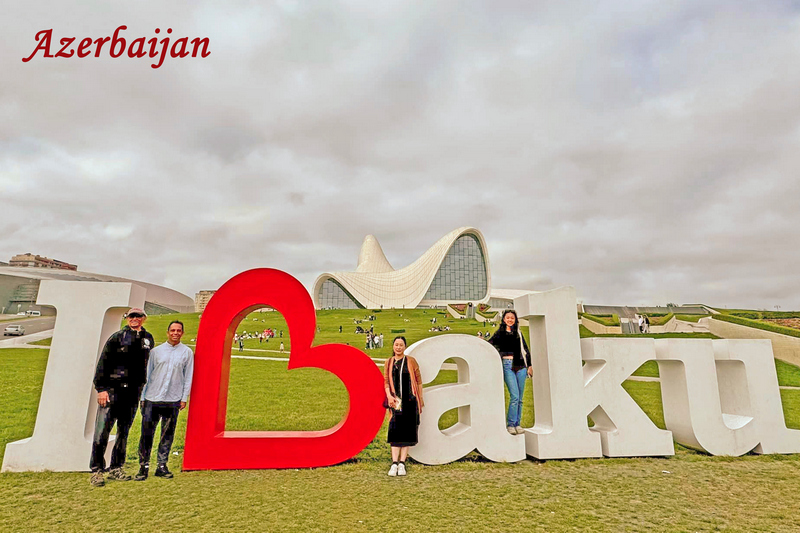
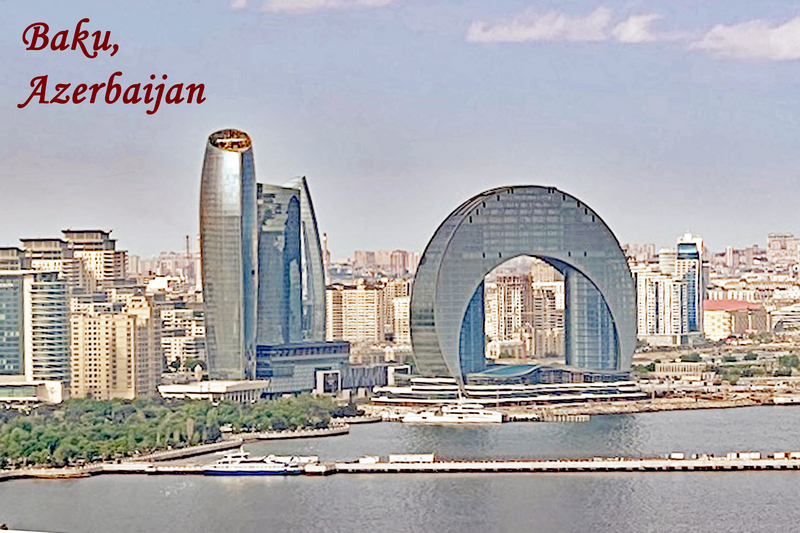
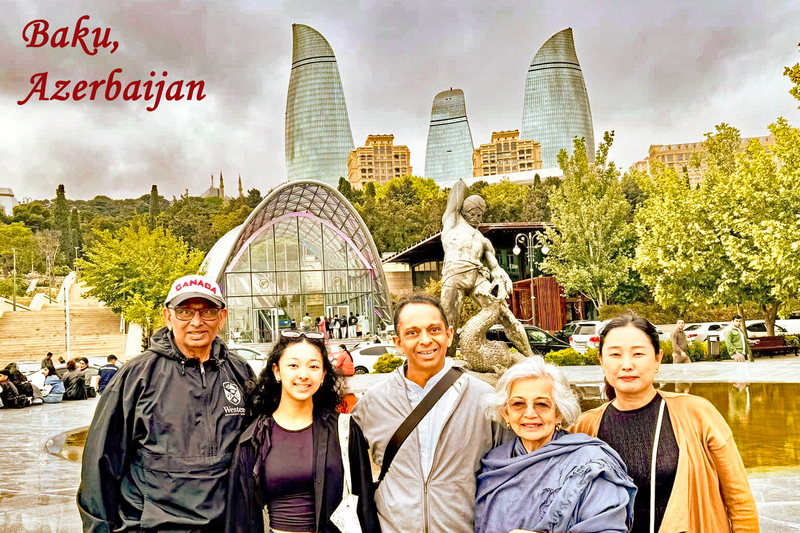
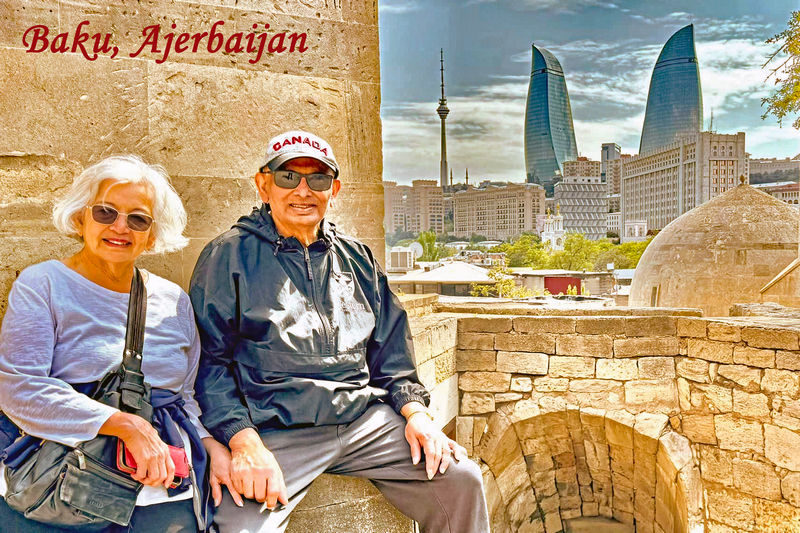
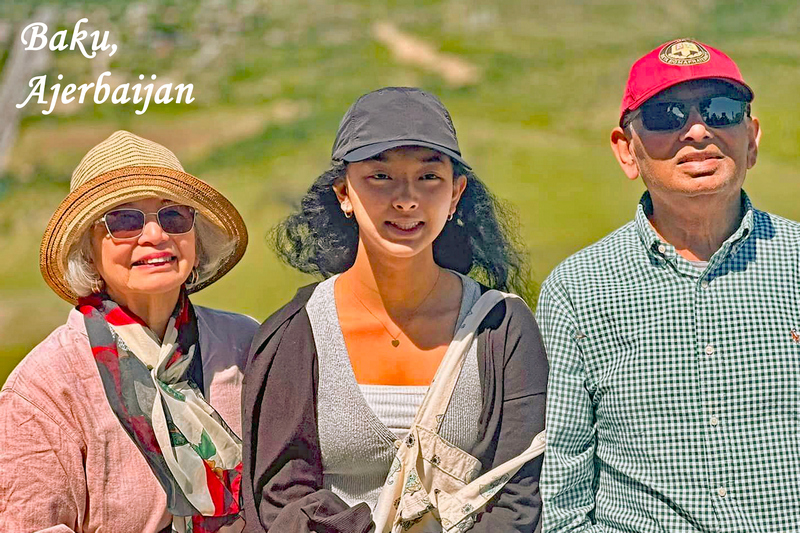
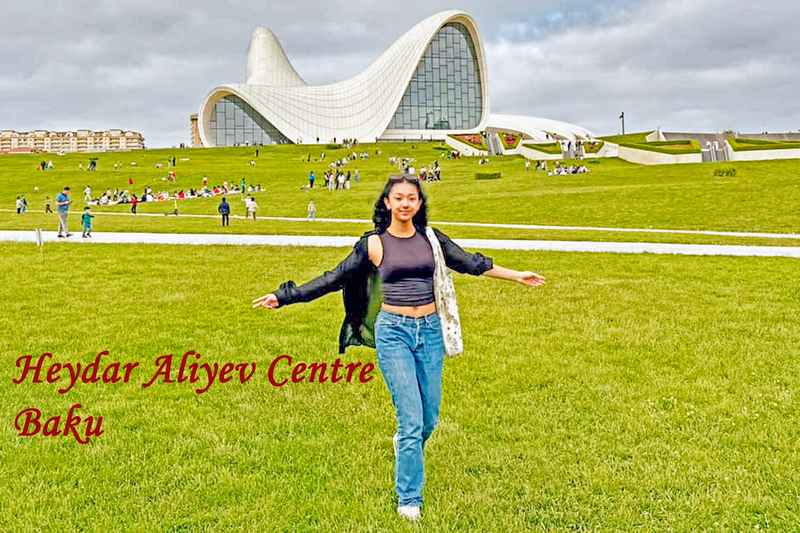
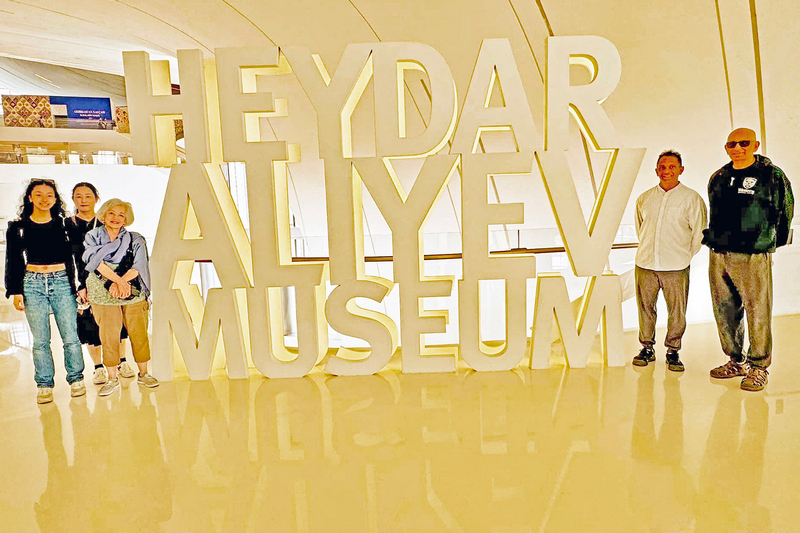
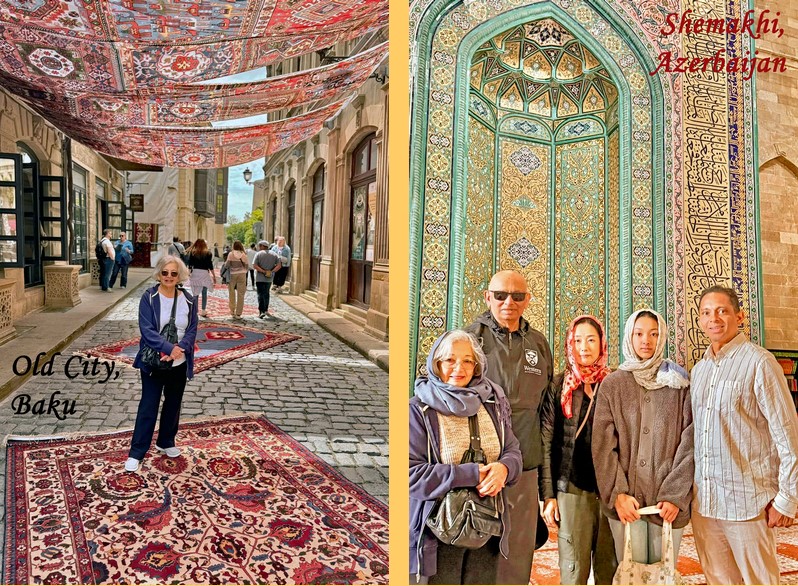
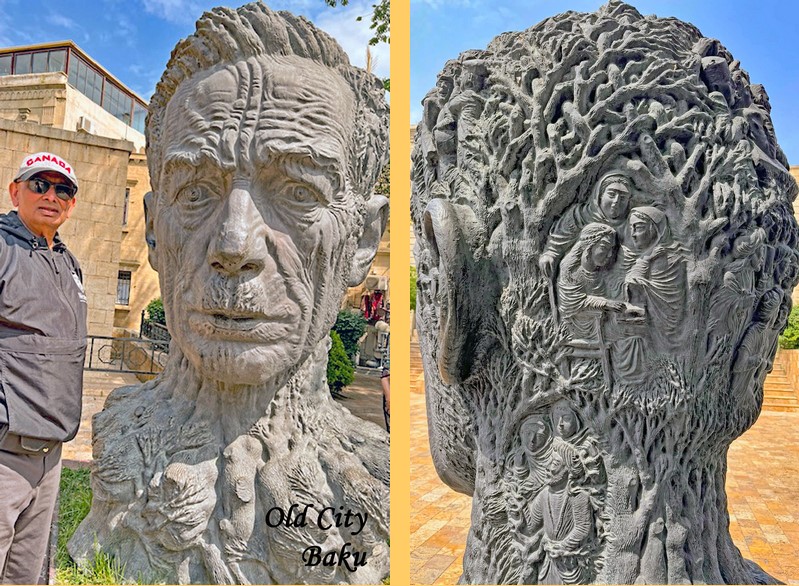
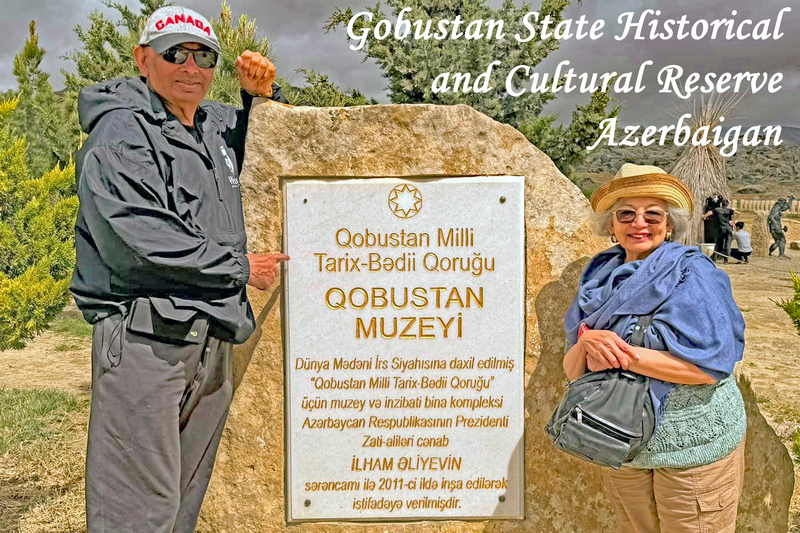
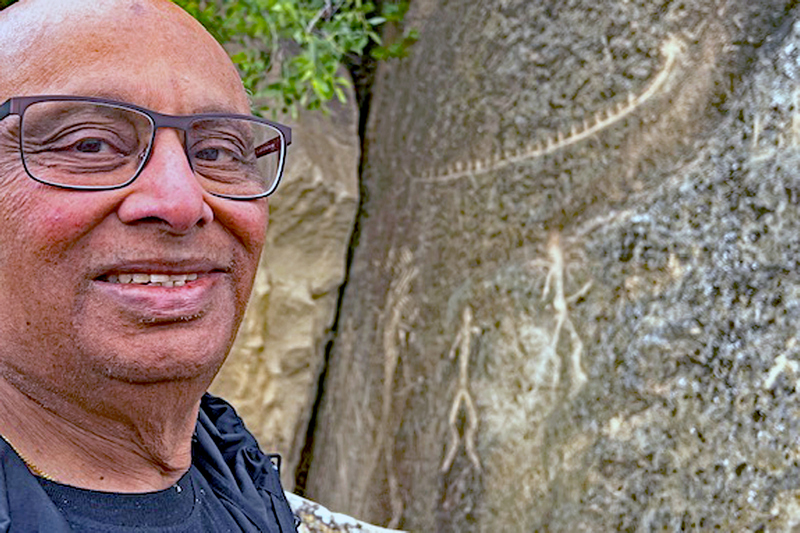
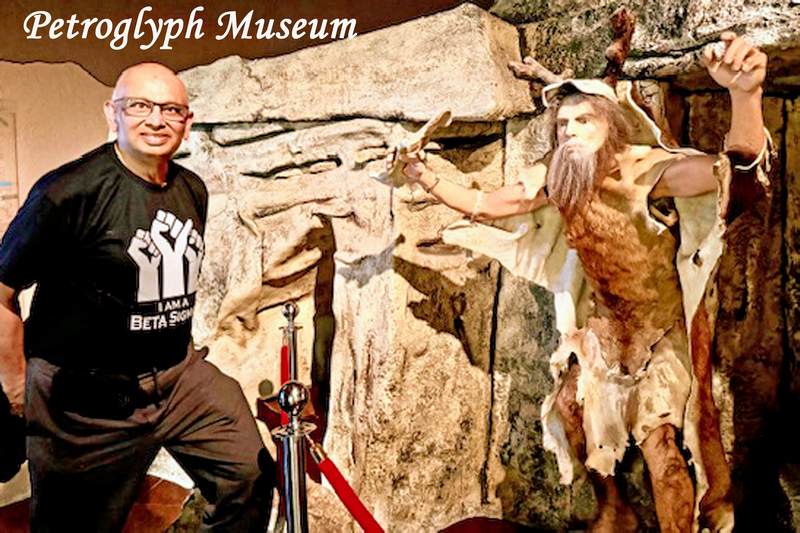
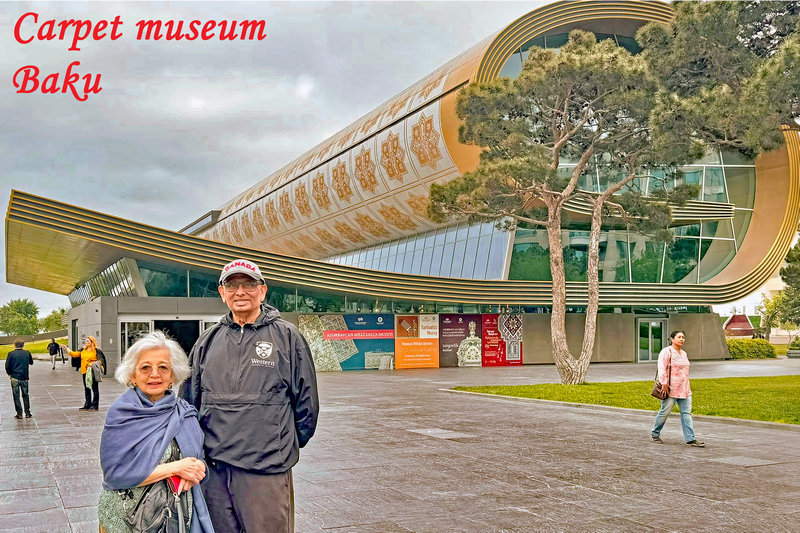
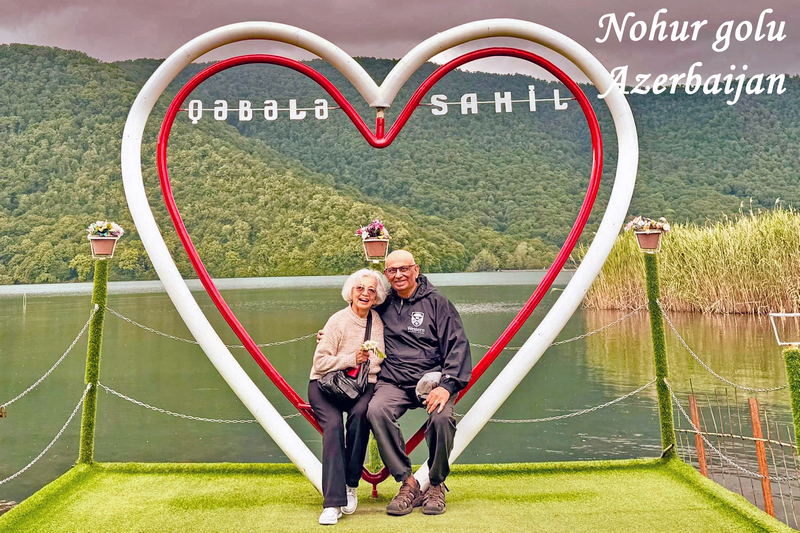
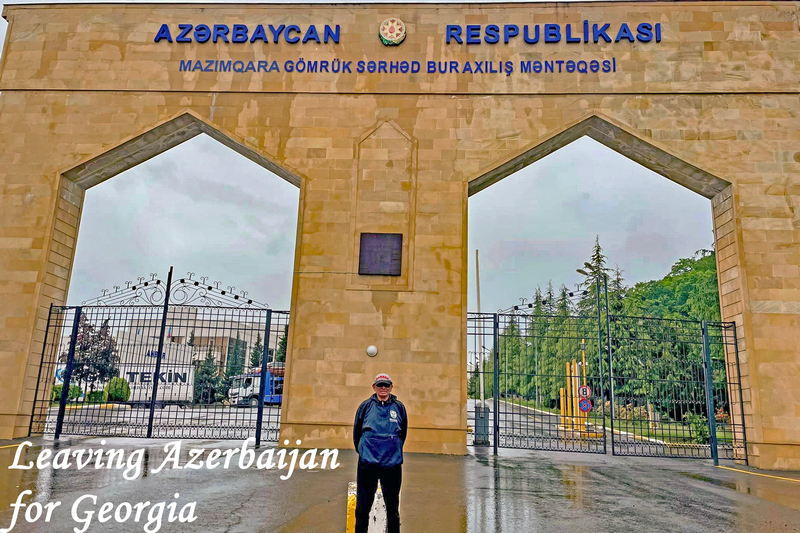
Georgia
Crossing the border into Georgia at Lagodekhi, we began our journey in the wine
region with a wine tasting in the City of Love, followed by a visit to the
Kvareli Wine Cave. Carved into the Caucasus rock massif, this 7.7 km tunnel
complex was opened in 1962 for the World Congress of Vine and Wine. The cave
maintains an ideal temperature for wine storage, housing up to 26,000 bottles of
quality wine.
En route from Telavi to Tbilisi, we visited a museum with
artifacts from the Stone Age, a castle, and the 6th-century Nekresi monastery.
Tbilisi, Georgia's capital, lies on the Kura River and has a population of
around 1.2 million. Founded in the fifth century AD, it has served as the
capital of various Georgian kingdoms and republics. Tbilisi's location at the
crossroads of Europe and Asia and its proximity to the Silk Road have made it an
important transit route for energy and trade projects. The city's architecture
is a mix of medieval, neoclassical, Beaux-Arts, Art Nouveau, Stalinist, and
modern structures. Historically, Tbilisi has been home to diverse cultural,
ethnic, and religious communities.
A morning walking tour included a
cable car ride to the statue of Mother Georgia, the underground market, and the
Peace Bridge.
In the afternoon, we drove to Mtskheta and Jvari Monastery.
Mtskheta, one of the oldest continuously inhabited cities in the world, was a
significant center of the Kingdom of Iberia. Its historical monuments, a UNESCO
World Heritage Site, include the Svetitskhoveli Cathedral, an 11th-century
masterpiece. Jvari Monastery, a 6th-century Georgian Orthodox monastery, is
known for its harmonious integration with the natural environment.
Despite rain and fog, we visited the 14th-century Gergeti Trinity Church at an
altitude of 2,170 meters, offering unforgettable views. We also saw the Tabor
Monastery of the Transfiguration, where we enjoyed a wine tasting.
On the
highway to Russia, we observed the Georgia-Russia border with long lines of
trailer trucks. We also visited the Ananuri medieval fortress-castle complex on
the Aragvi River, the seat of the Dukes of Aragvi. The complex has a tumultuous
history, including battles and massacres, and was placed on the tentative list
for UNESCO World Heritage status in 2007.
The Gudauri ski resort, located
at an elevation of 2,200 meters, offers avalanche-safe slopes above the tree
line, with a ski season from December to April.
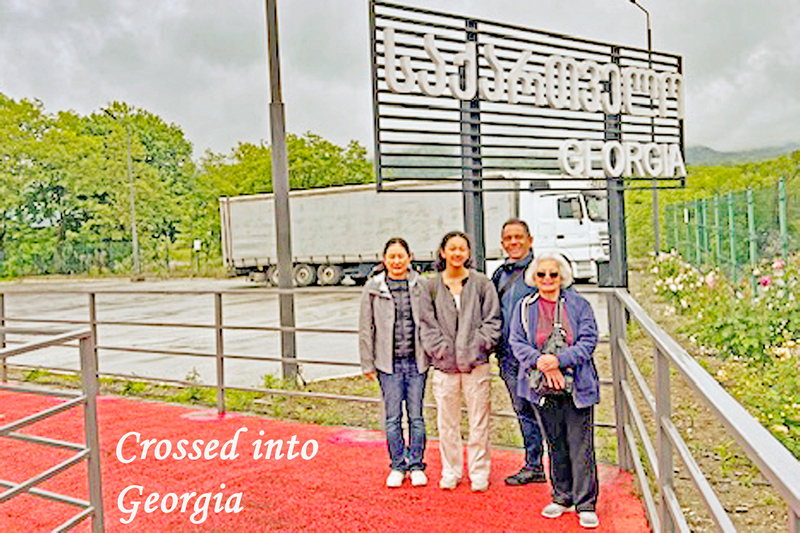
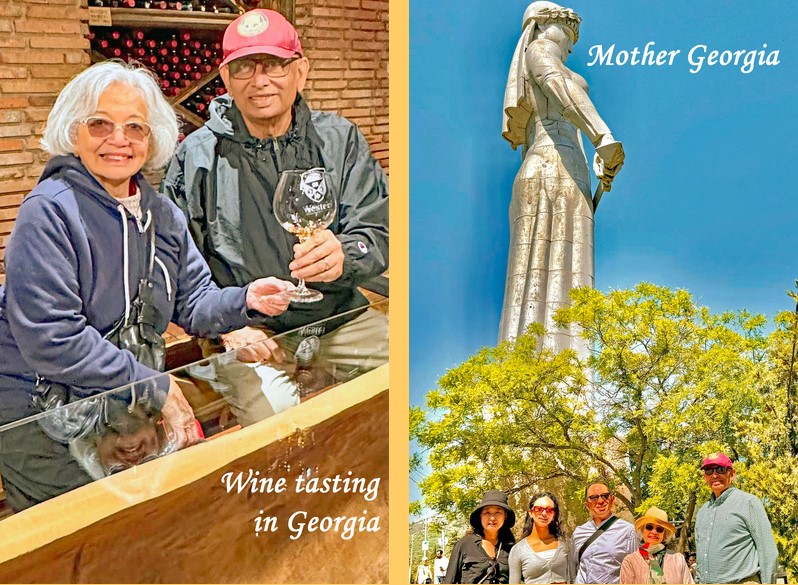
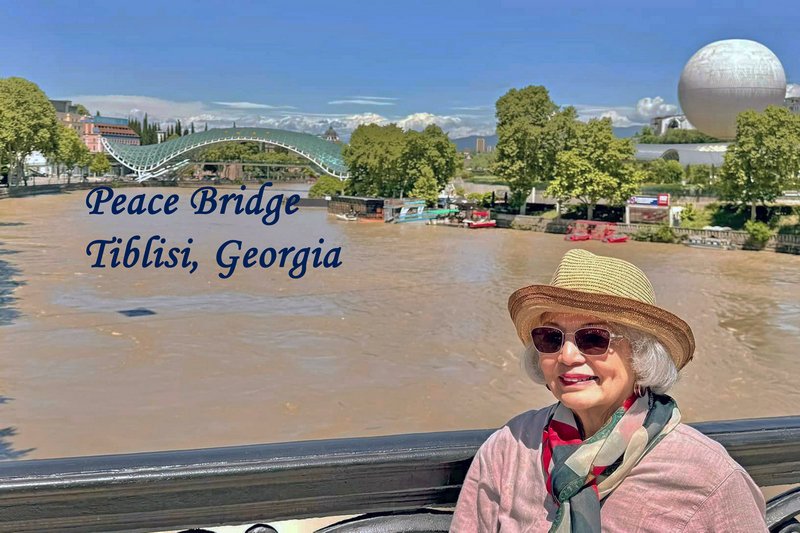
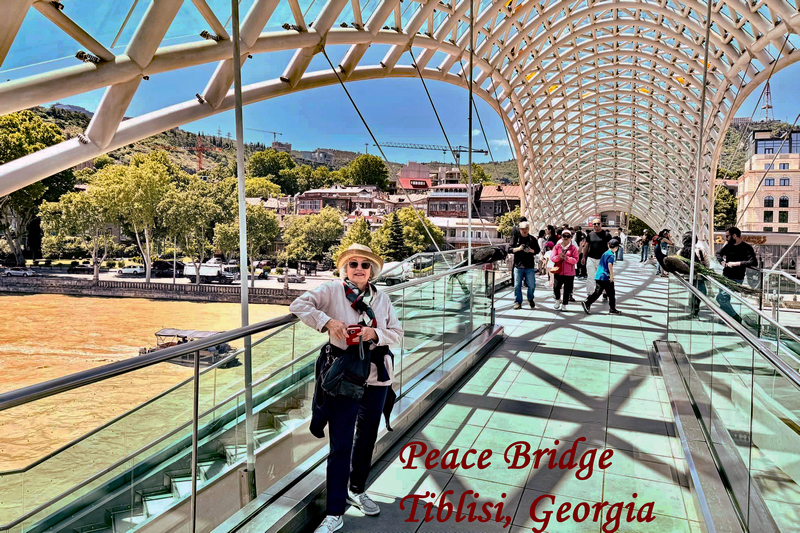
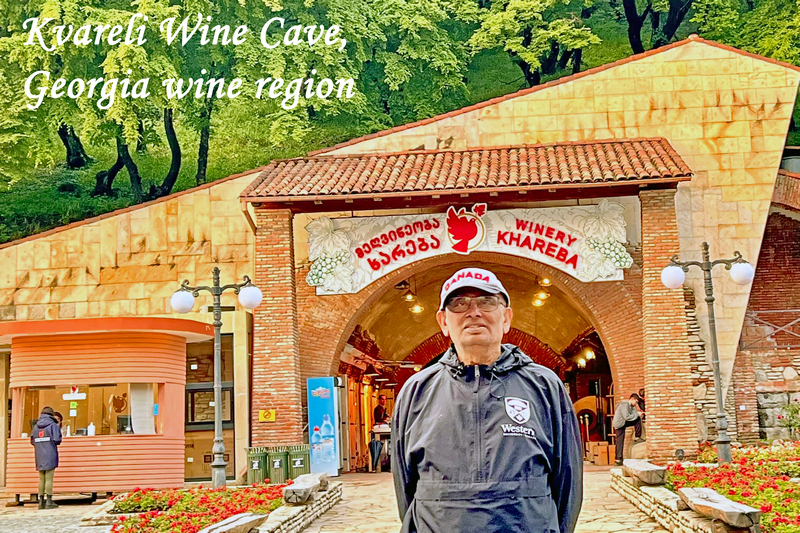
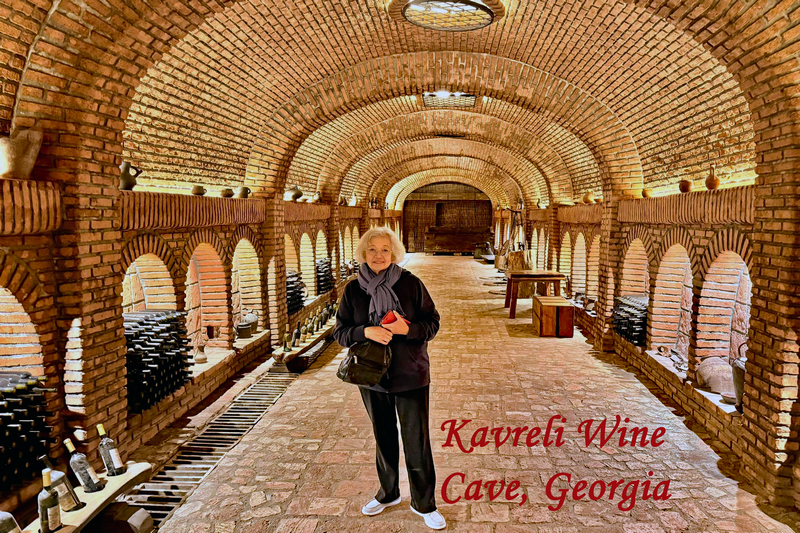
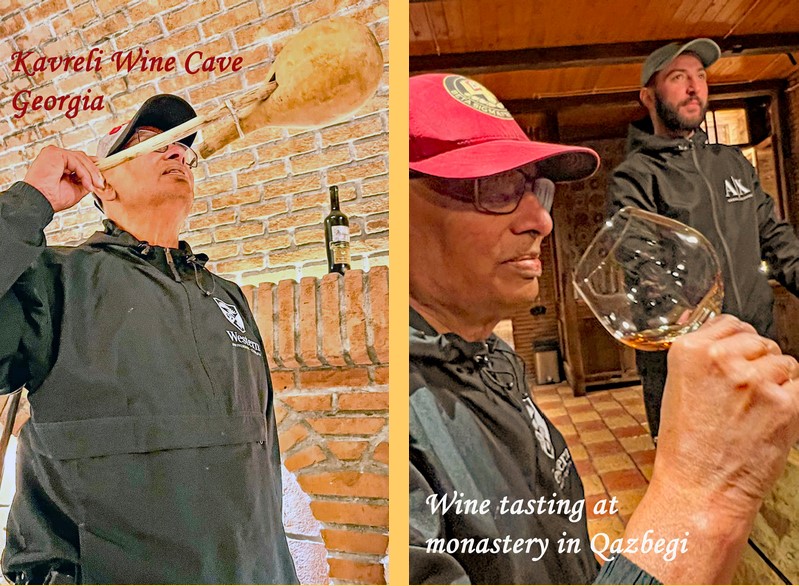
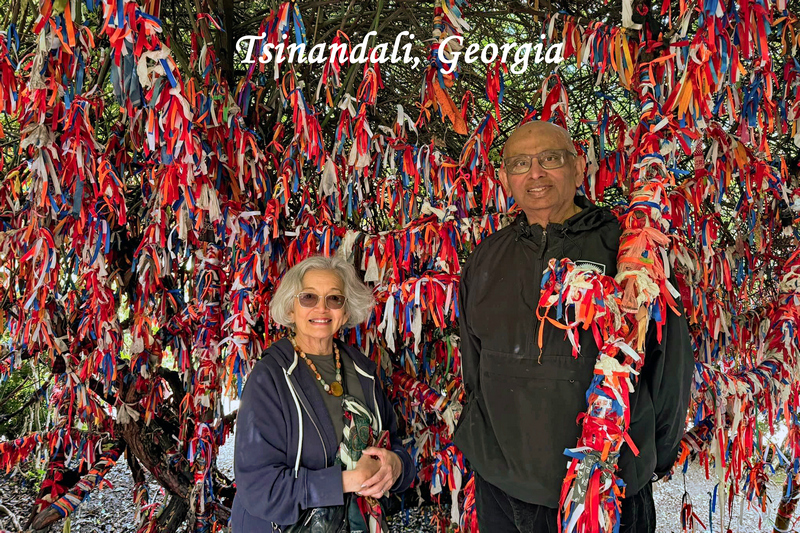
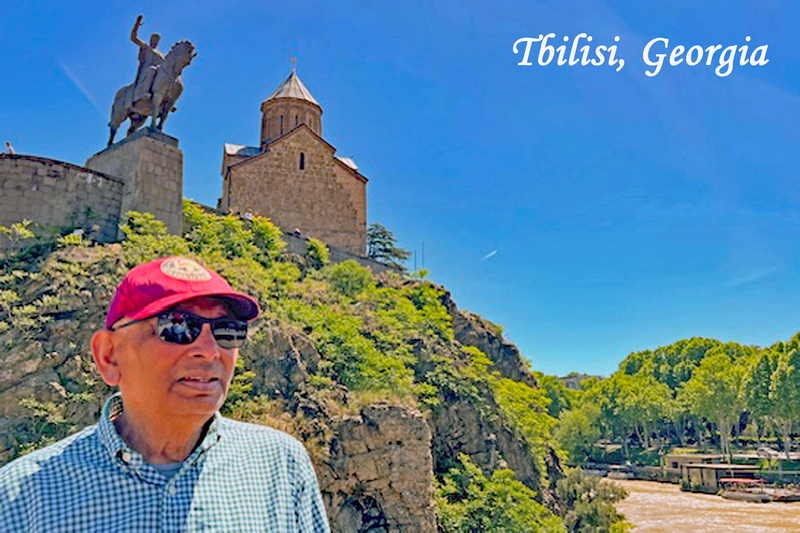
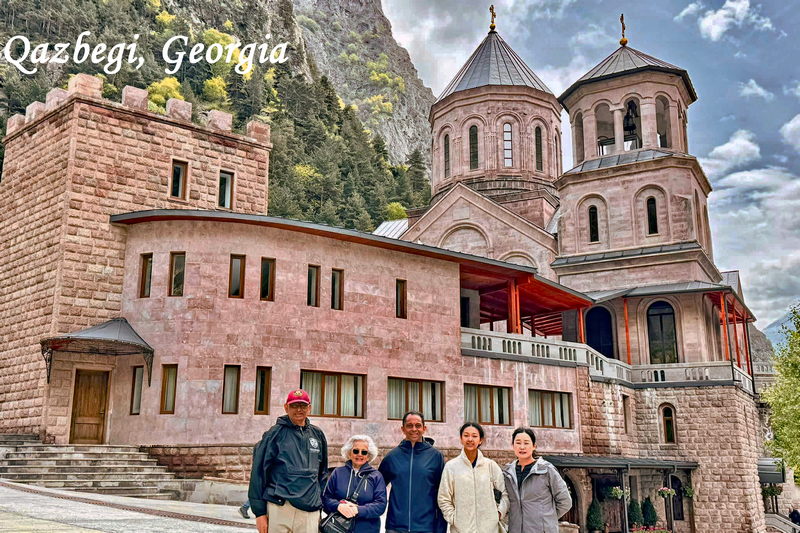
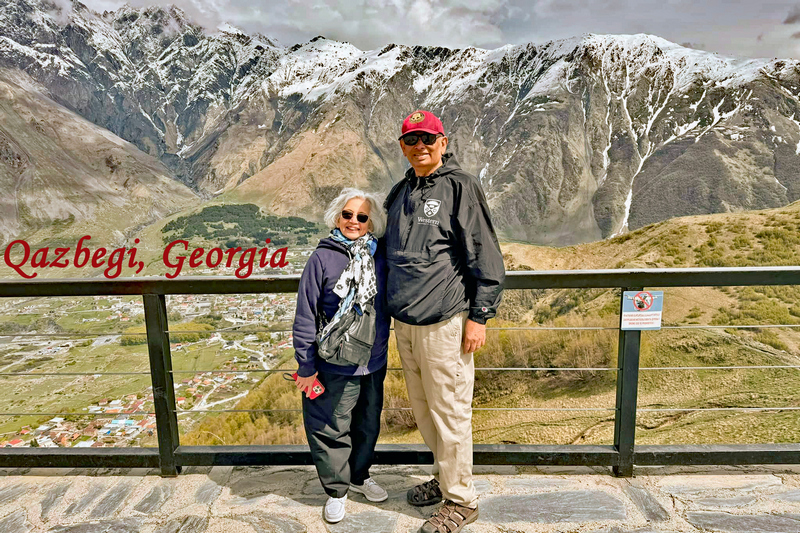
Armenia
On our first day in Armenia, we visited two ancient monasteries, both UNESCO
Heritage Sites: the 10th-century Monastery of Haghpat and the Monastery of
Sanahin. Our guide provided deep insights into the Armenian Apostolic Church and
its differences from other Eastern and Catholic churches.
We also visited
Lake Sevan, the largest body of water in Armenia and the Caucasus region. At an
altitude of 1,900 meters, it is one of the largest high-altitude lakes in
Eurasia. Lake Sevan is economically, culturally, and recreationally significant,
providing a major source of fish and crayfish for Armenia. We climbed 224 steps
to a church on a mountain for a panoramic view of the lake.
On the final
day of our trip through Turkmenistan, Uzbekistan, Azerbaijan, Georgia, and
Armenia, we visited The Matenadaran, the world's largest repository of Armenian
manuscripts, in Yerevan. Next, we explored the medieval Geghard Monastery,
partially carved into the mountain and known for the spear that allegedly
wounded Jesus.
Finally, we visited the Greco-Roman-style Garni Temple,
dating back to the 1st century AD, overlooking the Azat River gorge. The village
of Garni has 6,910 residents.
This journey across five countries over 20
days has been an eye-opening, mind-boggling experience, filled with rich
history, stunning architecture, and diverse cultures.
Overall, our
journey through these countries was an unforgettable experience.
